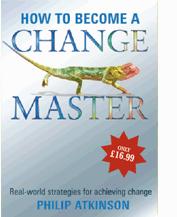How do you design a Change or Business Transformation initiative?
Question: How do you start building a specific Change or Business Transformation drive?
Answer: You have to decide what Business Transformation (BT) means to you which ever sector you occupy. BT has to be an essential element of your strategic plan. BT itself should be delivering the shape, function and culture of the organisation.
It is probably a good idea to undertake a strategic review. That strategic review should cover both the Hard and the Soft S’s. The Hard S’s are the more tangible side of the business and refer to:
This is not a ‘one size fits all’. What is appropriate in terms of a specific BT model for one organisation in the commercial sector may not be applicable to you if you operate in the public or third sector.
You have to tailor your model depending on the major challenges and constraints in your particular business. You may benefit from an independent view.
You have to build a culture of change acceptance. This may be difficult if you do not have a good history of Change Leadership.
Answer: You have to decide what Business Transformation (BT) means to you which ever sector you occupy. BT has to be an essential element of your strategic plan. BT itself should be delivering the shape, function and culture of the organisation.
It is probably a good idea to undertake a strategic review. That strategic review should cover both the Hard and the Soft S’s. The Hard S’s are the more tangible side of the business and refer to:
- Strategic Intent and Direction
- Structure always follows Strategy – not the other way about. Structure delivers key responsibilities and intent
- Systems and processes to support business Strategy and gel with and form the organisational structure
- Style of Change Leadership
- Skills – core behaviours
- Staff commitment and engagement
- Sharing information and data
- Shared values to bind teams together
- Symbols – branding and the desired culture
- Synergy – integrating both the hard and Soft S’s in an Implementation Plan
This is not a ‘one size fits all’. What is appropriate in terms of a specific BT model for one organisation in the commercial sector may not be applicable to you if you operate in the public or third sector.
You have to tailor your model depending on the major challenges and constraints in your particular business. You may benefit from an independent view.
You have to build a culture of change acceptance. This may be difficult if you do not have a good history of Change Leadership.
Question: What are the key processes to bring about Business Transformation?
Answer: You have to be curious and find out what it is about the business that is holding it back. Identify your key constraints and resistors. You can only do that by following a methodology which focuses on
Answer: You have to be curious and find out what it is about the business that is holding it back. Identify your key constraints and resistors. You can only do that by following a methodology which focuses on
- Defining Outcomes and Deliverables – do you have a tangible Business Plan?
- Measure where you are currently – you need a cultural component to your organisational review. This includes 1:1’s with key players, attitude surveys and focus groups. This can be achieved quite quickly if the research design is thorough.
- Investigation & Analysis. Here resides the conclusions and strategies from your strategic and cultural review.
- Implementation – building a culture of continuous Improvement requires a detailed Implementation Plan owned by Line Managers
- Sustain, Monitor and Review. Build a Vision to KPIs model and monitor it through the integration of your Business Plan, and the key issues within your change agenda.
Question: How do you win support of staff at all levels to see it through?
Answer: Your ultimate goal for the business is to set up a plan and process that will enable you to sustain business improvement. This does not happen by accident, but by design. You need to build a culture of change, and this means equipping your people with the right change skills. Some adopt a more structured Lean approach to continuous improvement, using internal people who are certificated using our Lean Business Transformation (ISO) such as our Yellow, Green, Black and Master Black Belts).
This is much more innovative and focuses on behaviours rather than just systems and processes as is the norm with traditional Lean Six Sigma programmes.
Without behaviour change at Team and individual level, you will not achieve the change required – after all, you should be trying to build a culture of organisational self-renewal.
What is important is that the skilled change makers you need to drive and implement the change do not arrive by accident. Specific L&D has to be untaken so that you can build a culture of change mastery.
If you build change competence you will have a buffer to repel the pressures and changes that other organisations cannot, inoculating the organisation against nasty surprises and threats in its external hostile and unpredictable business environment.
Answer: Your ultimate goal for the business is to set up a plan and process that will enable you to sustain business improvement. This does not happen by accident, but by design. You need to build a culture of change, and this means equipping your people with the right change skills. Some adopt a more structured Lean approach to continuous improvement, using internal people who are certificated using our Lean Business Transformation (ISO) such as our Yellow, Green, Black and Master Black Belts).
This is much more innovative and focuses on behaviours rather than just systems and processes as is the norm with traditional Lean Six Sigma programmes.
Without behaviour change at Team and individual level, you will not achieve the change required – after all, you should be trying to build a culture of organisational self-renewal.
What is important is that the skilled change makers you need to drive and implement the change do not arrive by accident. Specific L&D has to be untaken so that you can build a culture of change mastery.
If you build change competence you will have a buffer to repel the pressures and changes that other organisations cannot, inoculating the organisation against nasty surprises and threats in its external hostile and unpredictable business environment.
Email your questions to Philip

